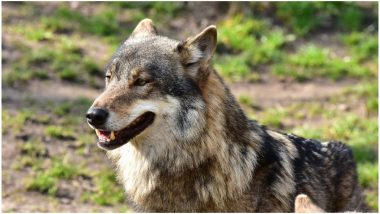A 40,000-year-old severed head of a wolf was found preserved in permafrost in eastern Siberia. The animal's head was found with teeth and fur inside frozen snow. The findings are combined efforts of both Russian and Japanese scientists. The animal is believed to be the world's first full-sized Pleistocene wolf and was saved in permafrost due to the good quality of preservation. The findings provide new insight into extinct species. Animal Cruelty in UK: Huntsman and His Kennel Maid Convicted for Feeding Live Fox Cubs to Hounds.
According to the Siberian Times, the wolf was found with large teeth, hair, ears, bones and brain in good condition, deep beneath the snow. The wolf's head was discovered by locals who hunt mammoth tusks for money. It was found buried near the bank of the Tirekhtyakh river in the Yakutia region of Siberia. While the head of the wolf is severed, scientists say that it may have died during ice shifting rather than being killed by a hunter. Scientists say that humans inhabited the land only years later. 5000-Year-Old Mummified Cats Uncovered From Egyptian Excavation Site in Cairo, View Pics.
Here is the photo of the wolf which was found in permafrost:
Still snarling after 400,000 years, the head of a giant Pleistocene wolf was just found in the permafrost of Yakutia, east of Siberia! Its fur, fangs and brain are intact.
(continued) pic.twitter.com/yLpU1x3Bem
— John Carlos Baez (@johncarlosbaez) June 9, 2019
CNN quoted Albert Protopopov, director of the department as saying, "This is the first time the head of an ancient wolf has been found whose soft tissue has been preserved after 40,000 years, a grown wolf." Protopopov said that scientists are building a digital model of the brain and skull's history for future study purposes. A group of researchers in Stockholm will be studying the wolf's DNA. He added, "It is definitely a wolf. Maybe the hair colouring makes people think it is a bear, but actually, it is quite strange to hear, as morphologically this is a very typical wolf."
While it is not clearly known, the fox is estimated to be between the age of two and four years old during the time of its death. Scientists say that they had stronger jaws that helped them killed even bigger animals like bison. Last week, head of the wolf was put on public display at an exhibition in Tokyo. While Yakutia remains frozen throughout the year, climate change has made exploration in the region increasingly easy.
(The above story first appeared on LatestLY on Jun 13, 2019 02:30 PM IST. For more news and updates on politics, world, sports, entertainment and lifestyle, log on to our website latestly.com).













 Quickly
Quickly


